Amazon indigenous land loss threatens climate, says study
- Published
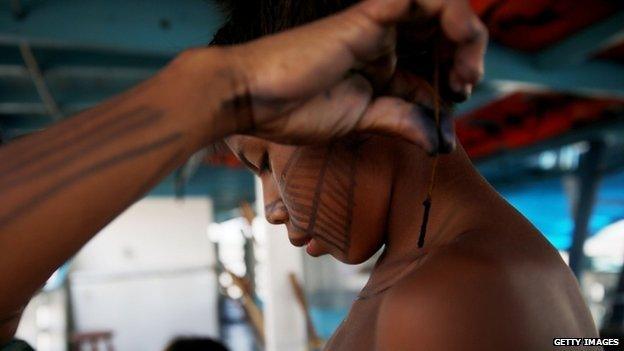
Brazil's Munduruku tribe is protesting against plans to construct a hydroelectric dam on the Tapajos River
Scientists say destroying indigenous areas of the Amazon rainforest will have an irreversible impact on the atmosphere of the planet.
A new study said indigenous lands were "protected natural areas" accounting for 55% of the carbon stored in the Amazon basin.
It said this land was at risk because governments had failed to recognise or enforce indigenous land rights.
The report was released on the first day of UN climate talks in Peru.
The study said nearly 20% of the Amazon forests are at risk from logging, mining, agriculture and infrastructure projects.
"If all the current plans for economic development in the Amazon are actually implemented, the region would become a giant savannah, with islands of forest," said Beto Ricardo of Brazil's Socio-Environmental Institute, one of the study participants.
"We have never been under so much pressure," said Edwin Vasquez, co-author of the study and head of the Indigenous Coordinating Body of the Amazon Basin.
Crackdown
The authors concluded that maintaining the stability of the global atmosphere would depend on whether governments chose to adopt policies that would ensure preservation of indigenous lands and protected areas.
Peru is more than 60% rainforest.
In the south-eastern region of Madre de Dios, in the past decade alone, mining has stripped 595 sq kilometres (230 sq miles) of forest and poisoned the rivers.
Most of the destruction is done by illegal miners from outside the region, though thousands have left in recent months because of a government crackdown.
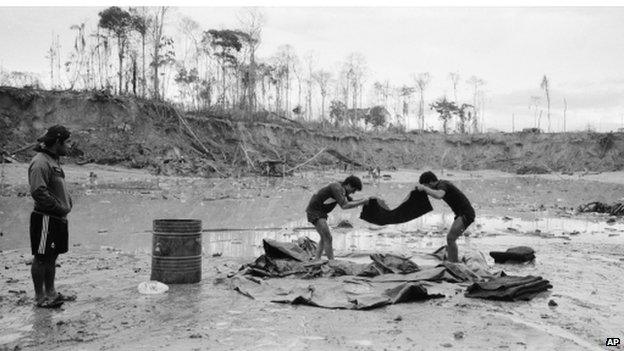
In Madre de Dios, excavations to reach alluvial gold have left holes that could swallow a half-dozen buses and contaminated rivers with tens of tons of mercury.
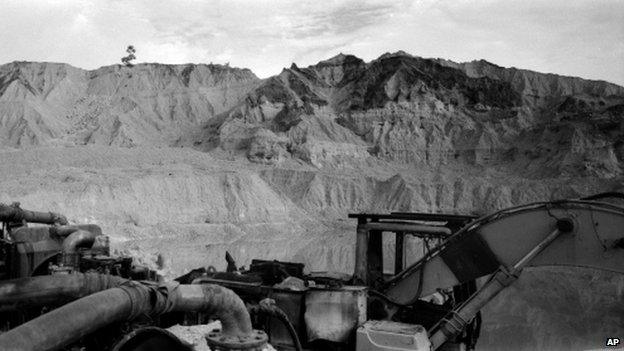
A government crackdown in the Madre de Dios region put out of commission mining machinery in some areas, leaving the environmental devastation behind.
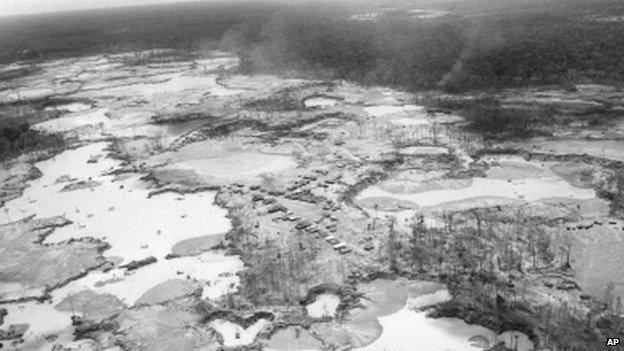
Miners live under canvas in the midst of the devastation they have caused. Illegal mining is the second biggest cause of deforestation in Peru after logging for agriculture says the government.
Indigenous rights have been in the spotlight as Peru hosts the UN climate talks which aims to negotiated a framework for a deal to cut global carbon emissions to be ratified in 2015.
An estimated 333,000 indigenous people live in the Peruvian Amazon and have grown increasingly vocal in their condemnation of logging, mining, and other encroachments on their land.
In September, four leaders from the Ashaninka people were killed while campaigning against deforestation and for land rights.
- Published27 November 2014
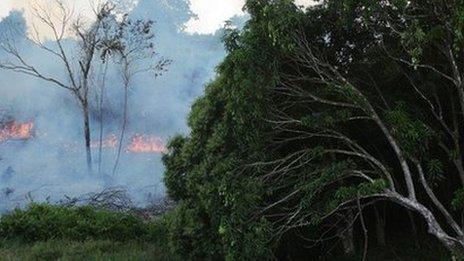
- Published2 January 2012
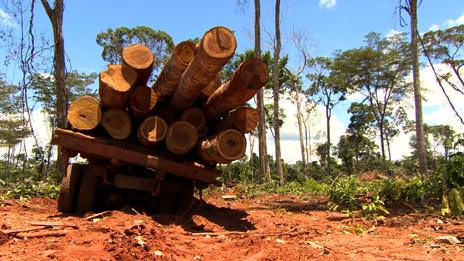
- Published4 September 2014
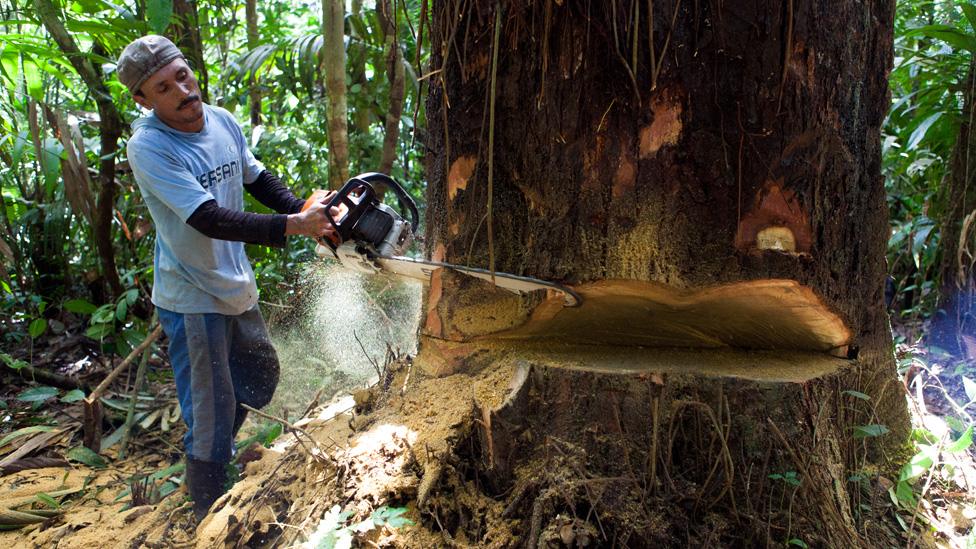
- Published15 November 2013
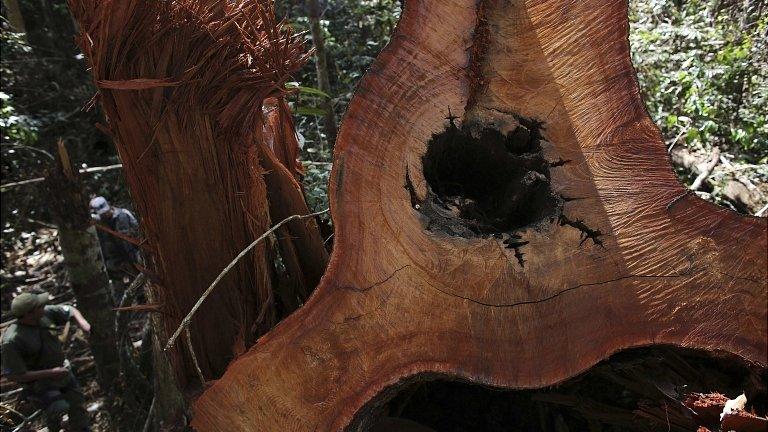
- Published28 January 2011